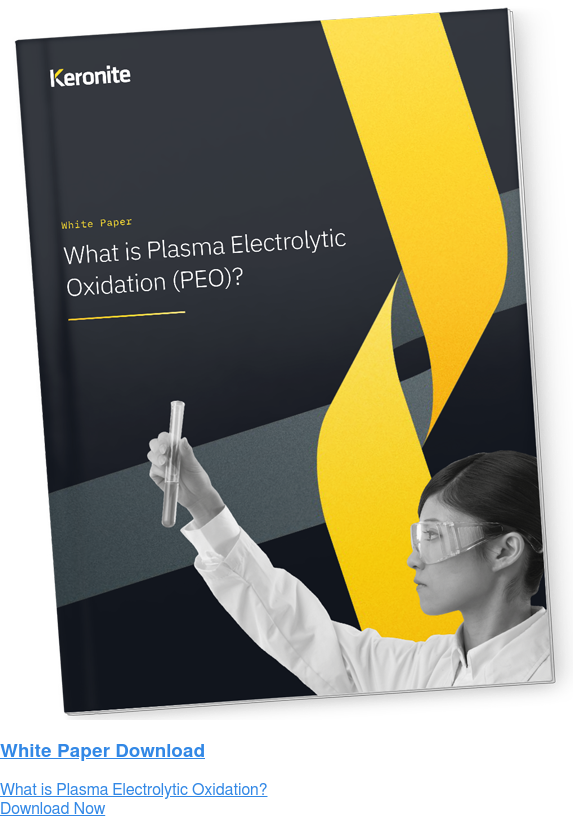How Keronite found aerospace an alternative to toxic chrome: a case study
28 May 2020We have previously looked at how the toxicity of chrome has forced manufacturers to find alternative coatings. Here we’ll take a closer look at how Keronite worked with a major aerospace manufacturer to create an optimal corrosion-resistant coating. We’ll see how Keronite’s consultation and testing procedures make full use of their expertise to solve a client’s particular needs.
The clock is ticking for chrome
For decades chrome-based coatings and paints were extensively used in many industries to provide corrosion resistance. As evidence for chrome toxicity has become undeniable, its use is increasingly regulated against. The aerospace industry is one of the few remaining to have not yet completely outlawed the use of chrome. Fears that it will soon be completely banned have led many aerospace manufacturers to seek out alternatives in advance.
Aerospace looks to Keronite
Keronite was approached by a major aerospace manufacturer looking to replace their chrome-based components. They had been using chromic acid anodising and sodium dichromate sealers on aluminium 2219 to improve wear resistance without adding weight.
The challenge for the Keronite team was to see whether their PEO technique could create a lightweight coating comparable to that produced through chromic acid anodising. In addition, it had to be possible to add a chrome-free sealer to the coated aluminium that would enhance overall corrosion-resistance without altering the appearance of the Keronite.
Keronite's testing methods
Keronite’s technicians are able to alter the parameters of the PEO with a great deal of precision. Small changes in voltage and the time it is applied lead to great differences in the composition of the ceramic coating formed on the substrate of the metal. In this case, it was important that the Keronite coating had an optimal porosity to allow bondage with the sealer.
5 variants of Keronite were prepared on 2024 aluminium test plates. To ensure repeatability, each Keronite variant was applied to 3 identical plates, resulting in 15 Keronite coated 2024 aluminium plates. For comparison purposes, 3 plates were coated with chromic acid anodising.
Various sealers were applied to different sections on each of the plates. Part of each plate was left unsealed, to test whether or not the sealer changed the appearance of the Keronite.
To mimic the effect of years of exposure to corrosion, Keronite’s scientists use the industry standardised ASTM B117 salt spray test. Placing the samples in a laboratory salt spray chamber for 168 hours gives an accurate, visible, and measurable sense of how variously corrosion-resistant they are.
Not every Keronite coating is fit for every purpose. Keronite’s extensive testing collects data on all test plates. It was clear that some of the coatings were not fit for this particular metal, either because of how they reacted with the 2024 aluminium substrate or how the sealer grafted to the Keronite. Keronite’s expertise means knowing for sure what does and doesn’t work.
The optimum alternative
Ultimately, Keronite’s testing conclusively guaranteed that they could produce a chrome-free alternative coating that completely met previous specifications, to the satisfaction of the client. Aerospace manufacturers looking for chrome-free replacements to sealed 2024 aluminium components can expect the same benefits.
Beyond the environmental and medical hazards, chrome-based anodising seems to create fatigue problems in the coated metal. Tests are currently testing Keronite coated metals to see how their fatigue resistance compares: it’s looking like Keronite coatings might ultimately surpass chromium coatings in term of performance, where now they at least match them.
To find out more about how Keronite can help you find corrosion resistant replacements for your chrome-based components, get in touch today.

 Keronite is now part of the CWST engineered coatings business.
Keronite is now part of the CWST engineered coatings business.
About the author
